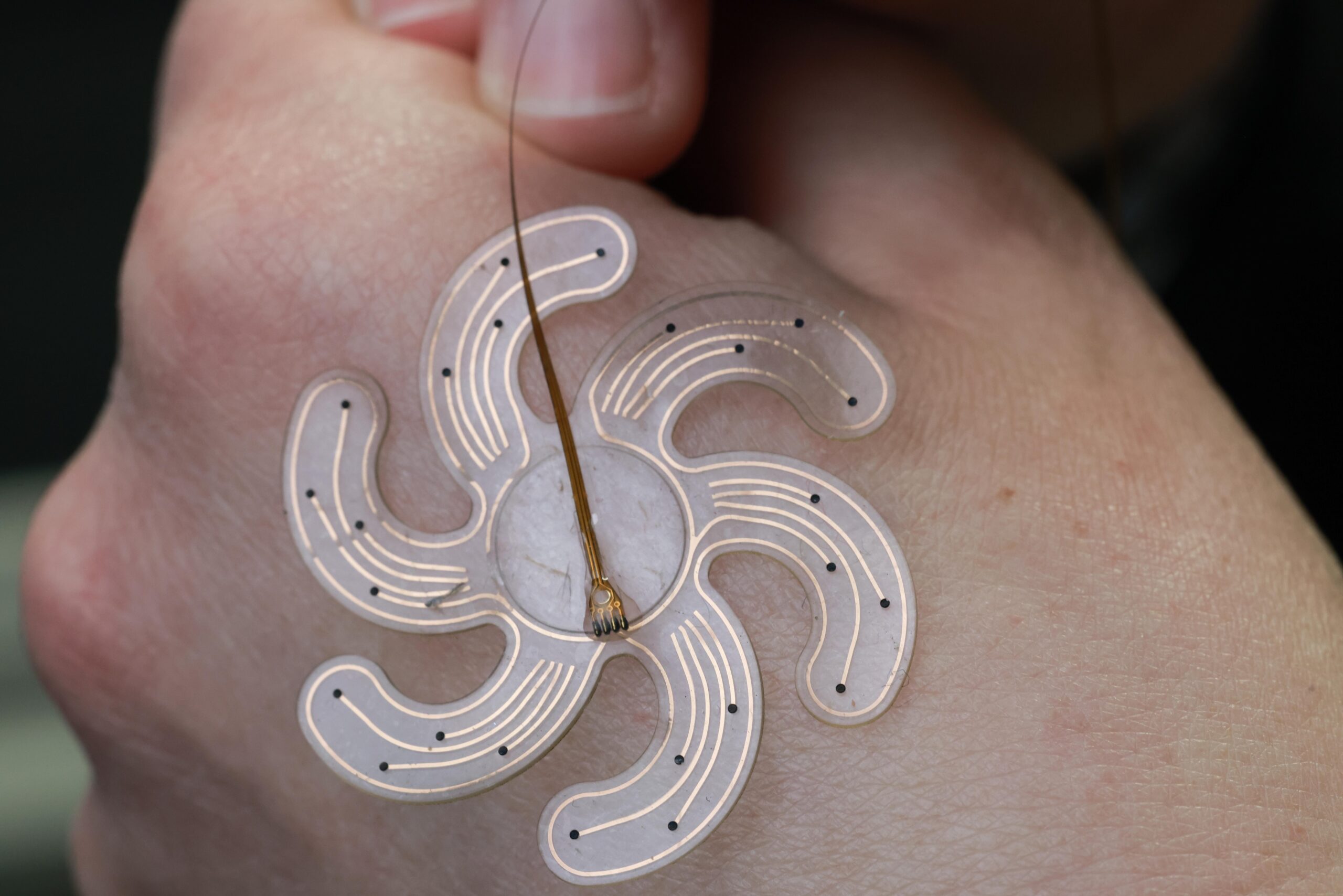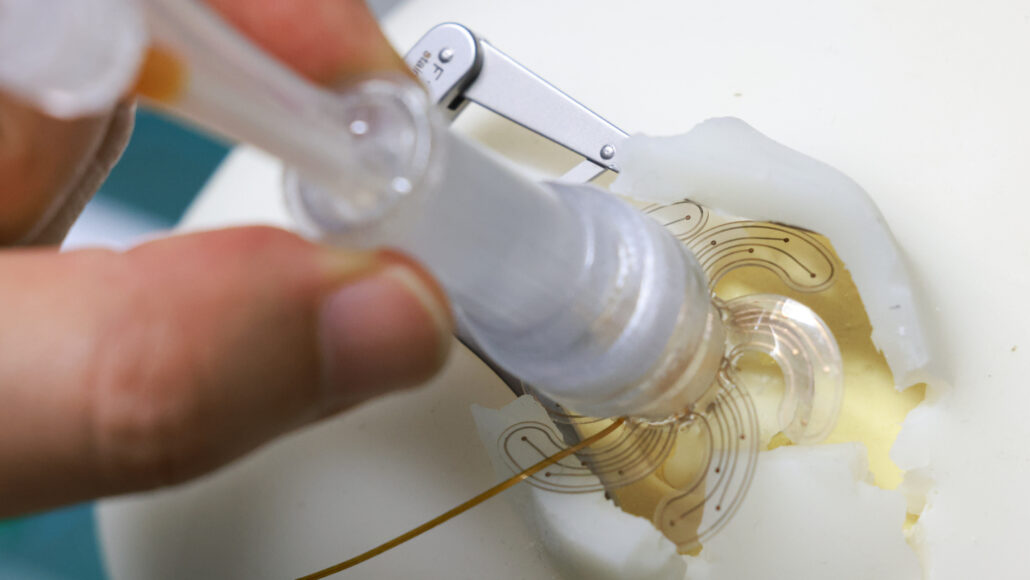Flower-Shaped Soft Robot: A Whisperer to the Brain’s Secrets

Revolutionary Soft Robot Unveiled: A Promising Breakthrough in Brain Monitoring and Seizure Treatment
In a remarkable development with profound implications for neuroscientific research and the treatment of seizures, scientists have unveiled a tiny and flexible machine that could enable neuroscientists to eavesdrop on electrical activity in the brain with exceptional precision. This groundbreaking flower-shaped device, described in a study published in Science Robotics on May 10, has the potential to revolutionize the field by providing a less invasive method to monitor and treat seizures directly within the brain.
Designed to be inserted through a small hole in the skull measuring just 1 to 2 centimeters in diameter, this innovative device unfolds a flexible array of sensors upon implantation, allowing it to directly contact the brain’s surface and monitor electrical activity. A successful demonstration on a minipig showcased the device’s effectiveness, suggesting that it could replace the need for the current invasive procedure of removing a significant portion of the skull to place sensors on the brain.
Cutting-Edge Flower-Shaped Device Holds the Potential to Revolutionize Neurosurgery

This groundbreaking machine, known as a soft robot, derives its name from its unique construction. Unlike traditional mechanical devices, it is composed of flexible materials and possesses a sensory apparatus that unfolds like a flower once implanted. This flexibility and adaptability have captured the attention of neurosurgeons, who envision a potential paradigm shift in neurosurgical procedures.
Dr. Joseph Madsen, a neurosurgeon at Harvard Medical School who was not involved in the study, expressed his enthusiasm, stating, “Of all the soft robotics that I’ve seen, it’s kind of the one that you say, ‘Wow, this is really going to change, potentially, the way we do things in neurosurgery.’ The idea of a robot that kind of internally unfolds and goes over the brain is just very elegant.”
The soft robot consists of a central hub surrounded by six flat, petal-shaped sensors made of a soft and flexible material. Initially, the petals are inverted into the hub, resembling a glove turned inside out. Once inserted into the skull, a flow of saline solution through the hub delicately forces the petals to open, allowing them to lay flat against the surface of the cerebral cortex. Each petal houses sensors that indicate when they are in place, subsequently initiating the monitoring of brain activity. The gathered information is then transmitted back to a monitor via electrical wires.
To validate their invention, lead researcher Stéphanie Lacour, a bioengineer at École Polytechnique Fédérale de Lausanne in Geneva, and her team successfully tested a prototype in the brain of a minipig. The daisy-sized sensor array was implanted inside the skull, and it effectively recorded electrical activity. Lacour envisions scaling up the technology for human use, expanding the coverage area. In the future, bidirectional versions of the device could be developed, capable of both sensing brain activity and stimulating it. This advancement could potentially prevent seizures before they occur, stimulate brain regions damaged by stroke, or serve as a brain-machine interface, enabling individuals to control devices.
To further develop the technology and conduct the necessary additional testing for approval in human patients, the researchers have established a company. This signifies a crucial step towards translating this cutting-edge innovation from the laboratory to practical clinical applications, paving the way for significant advancements in neuroscience and personalized patient care.
As the journey continues to unlock the mysteries of the brain, this remarkable soft robot presents a beacon of hope for individuals suffering from seizures and neurological disorders. With its potential to revolutionize neurosurgical procedures, this groundbreaking invention holds the promise of enhancing our understanding of the human brain and transforming the lives of countless patients worldwide.
Next Post : Shouting Upwind Amplifies Sound



